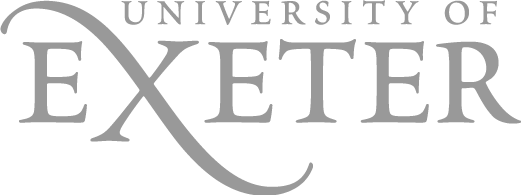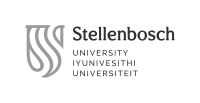F2415 Science Communication and Sustainability
Professors
Schedule
Course Description
This course examines the topic of science communication, providing an introduction to (i) the role of communication in science and research, as important element of RRI - Responsible Research and Innovation, (ii) the cultural, practical and policy-related role of science communication in wider society to promote public engagement in discussion and actions, and (iii) the role it can play in supporting sustainable development.
The course starts from exploring the definitions of science communication and the evolution of the concept from an education approach to a more dialogic one. It then addresses three key questions concerning science communication and the public, in terms of (i) who are the publics to reach, (ii) why to communicate them,(iii) what to communicate and (iv) how to communicate in an effective way. The non-mediated vs. mediated modes of communicating are considered, putting in evidence barriers and opportunities related to each strand, from journalism to museums, social media and others. Attention is given to the risks of misinformation and building trust in science.
The course puts special emphasis in science communication in relation to sustainable development and environmental issues, and how it can support the achievement of the SDGs.
A key element considered throughout the course is the quality in science communication and how to “recognize” it.
Learning Objectives
Students gain exposure to the great body of scholarship about science communication, including work from communication studies, sociology and science theories among others. They also gain sharper understanding of the importance of communicating their research and its impact on society. Challenges of science communication are deeply explored, in particular in relation to environment and sustainable development.
The course takes advantage of VIU’s unique international diversity by building in opportunities for students to share and reflect upon science communication role and trajectories in their own home countries. In addition, great attention is given to the interdisciplinary approach of Science communication taken advantage of the multidisciplinary components of VIU classes.
Teaching and Evaluation Methods
The course is organised around different thematic areas covered also with the help of external professionals, active ‘on the field’ from different science communication areas.
The course includes frontal lectures, meetings with experts and open discussion on the theories and practice of science communication, case studies on
communication of specific scientific topics and practical work on their revisions, both individually and in group.
Seminars involving practitioners of different strands (journalists, museum explainers, experts in social media) are organized.
Site visits are part of the course.
No specific background is required to attend the course. Students are expected to do the required readings, to attend class regularly and actively participate in discussions. Required readings are designated on a weekly basis. Students are also encouraged to find additional material for their final project by searching the Internet and accessing suggested websites. Individual paper and a group project on science communication is required.
Individual mid-term essay – an essay on science communication role today, with specific reference to students’ field of study and to the different SciCom formats and strands that can be used – 45 % of the final grade.
Final project – There will be a group science communication project to develop, to present in a written group report and through an oral presentation in class – 45
% of the final grade.
Class participation – Overall class participation, in terms of both attendance and interaction, will count for 10% of the final grade.
Syllabus
Week 1
_Lecture: Introduction to Science Communication: Definitions
Required Readings
Trench, B. (2017). Science Communication and Science in Society: A Conceptual Review in Ten Keywords. Tecnoscienza: Italian Journal of Science & Technology Studies.
Davies S.R., Horst M. (2016). Science Communication. Culture, Identity and Citizenship, Palgrave Mcmillan. Chapter 1: Introduction, pp. 1-27.
Suggested Readings:
Rempel E. S., Barnett J., Durrat H. (2018). Public engagement with UK government data science: Propositions from a literature review of public engagement on new technologies. Government Information Quarterly 35 (2018) 569-578
_Lecture: Science Communication Landscape Today between Theory and Practice
Required Readings
Davies S.R, Franks S., Jensen A. M., Mannino I., Schmidt A. L., Wells R., Woods R., Zollo F. (2020). Section 2: Contemporary Science Communication Scholarship in Europe: A Fractured Field. Summary report: European Science Communication today, QUEST Project Deliverable 1.1, Section 1-2. pp. 9-19.
Week 2
_Lecture: Sustainable development: the concept and its history
Ilda Mannino
Required readings: https://sdgs.un.org/2030agenda
Suggested readings: FAO (2007). Communication and Sustainable Development. Selected Paper from the 9th UN roundtable on communication for development.https://books.google.it/books?id=iPwAnR_Efa4C&printsec=frontcover#v=onepage&q&f=false Latouche S. (2004). Degrowth Economics, Le Monde Diplomatique, November 2004.
_Lecture: Science Communication role from the past to nowadays and for Sustainable Development
Required Readings: Davies S. R. (2021). An Empirical and Conceptual Note on Science Communication’s Role in Society, Science Communication 2021, Vol. 43(1) 116–133; Newig J., Schulz D., Hetze K., Laws N., Lüdecke G., Rieckmann M. (2013). Communication Regarding Sustainability: Conceptual Perspectives and Exploration of Societal Subsystems, Sustainability 2013, 5, 2976-2990; doi:10.3390/su5072976
Week 3
Meet the expert - 1
Visual communication of science
Folco Soffietti, Venice International University and IUAV University of Venice
_Lecture: Science Museums and Science Centers
Required Readings: Chapter 4: Science Museums and Centers: Evolution and Contemporary Trends, pp. 53-76. Routledge. Handbook of Public Communication of Science and Technology…
Week 4
_Meet the expert - 2
Art & Science
_Meet the experts – 3
Paola Rodari, SISSA Science Museums
Friday, October 11
Visit to ORTO BOTANICO PADOVA and/or Museum of Medicine in Padua
Week 5
_Lecture: Environment and Sustainability Communication
_Lecture: The media and mass media
Required Readings: Ghulam S., Ghulam S., Tanzeela J. (2015). Mass Media, Communication and Globalization with the Perspective of 21st Century. New Media and Mass Communication, Vol.34, 2015.
Week 6
_Lecture: The Role and challenges of science journalism in science communication
Required Readings: Dunwoody S. (2021). Chapter 2: Science Journalism: Prospects in the digital age. Routledge Handbook of Public Communication of Science and Technology, Bucchi M., Trench B. eds. (2021), Third Edition; Davies S.R, Franks S., Jensen A. M., Mannino I., Schmidt A. L., Wells R., Woods R., Zollo
F. Section 3: Contemporary Science Journalism in Europe: Taking Stock. Summary report: European Science Communication today, QUEST Project Deliverable 1.1, Section 3. pp. 20-34.
_Meet the experts – 4
Marco Boscolo, Journalism and Sustainability Narrative
MIDTERM Break, October 28-November 2
Week 7
_Lecture: Social Media Literacy for Science Communication
_Meet the experts - 5 Cristina Rigutto, Social media
Friday, November 8
_Rescheduled class Lecture: Citizen Science
Required Readings: Haklay M., Dörler D., Heigl F., Manzoni M., Hecker S., Vohland
K. (2021). What Is Citizen Science? The Challenges of Definition, in The Science of Citizen Science, Vohland K., Land-Zandstra A., Ceccaroni L., Lemmens R., Perelló J., Ponti M., Samson R., Wagenknecht K. (eds.), chap. 2.
Week 8
_Lecture: Science Communication and Pop Culture formats
_Meet the experts – 6 or Final Project: group exercise
Friday, November 15
VIU Plenary Workshop
Week 9
_Lecture: How to communicate about research: tips to apply to the group work and Team building
Required Readings: QUEST checklist for scientists
Thursday, November 21
NO CLASS
Week 10
_Final Project: group exercise 1: identify your audience needs and expectations
_Lecture: Evaluating Science Communication
Week 11
_Final Project: group exercise 2: identify the messages to deliver
_Lecture: Science communication, Misinformation and Trust
Readings: Altay S. (2022). How Effective Are Interventions Against Misinformation?, Preprint.
Week 12
_Final Project: group exercise 3: frame the format
_Final Project: group exercise 4: open the dialogue and evaluate the impact
Exam Week
Presentation of Students’ work
Readings
There will be a number of articles and readings available on the VIU course eLearning platform, such as:
Altay S. (2022). How Effective Are Interventions Against Misinformation?, Preprint.
Brossard, Dominique, and Dietram A. Scheufele. "Science, new media, and the public." Science 339.6115 (2013): 40-41.
Bucchi M., Trench B. eds. (2021). Routledge Handbook of Public Communication of Science and Technology.
Davies S. R. (2021). An Empirical and Conceptual Note on Science Communication’s Role in Society, Science Communication 2021, Vol. 43(1) 116–133; Newig J., Schulz D., Hetze
Davies S.R, Franks S., Jensen A. M., Mannino I., Schmidt A. L., Wells R., Woods R., Zollo F. (2020). Summary report: European Science Communication today, QUEST Project Deliverable 1.1.
Davies S.R., Horst M. (2016). Science Communication. Culture, Identity and Citizenship, Palgrave Mcmillan, pp. 1-27.
Dawson E. (2018). Reimagining publics and (non) participation: Exploring exclusion from science communication through the experiences of low-income, minority ethnic groups. Public Understanding of Science, Vol. 27(7) 772–786.
Del Vicario M., Bessi A., Zollo F., Petroni F., Scala A., Caldarelli G., Stanley H.E., and Walter Quattrociocchi W. (2016). “The Spreading of Misinformation Online.” Proceedings of the National Academy of Sciences 113 (3).
Dunwoody S. (2021). Chapter 2: Science Journalism: Prospects in the digital age. Routledge Handbook of Public Communication of Science and Technology, Bucchi M., Trench B. eds. (2021), Third Edition
FAO (2007). Communication and Sustainable Development. Selected Paper from the 9th UN roundtable on communication for development. https://books.google.it/books?hl=en&lr=&id=iPwAnR_Efa4C&oi=fnd&pg=PA1&dq=science+communication+and+sustainable+development&ots=4s-_Pyit22&sig=J7AoIAmWurSB8nwoE4_j3YkXSq8#v=onepage&q=science%20communication%20and%20sustainable%20development&f=false
Ghulam S., Tanzeela J. (2015). Mass Media, Communication and Globalization with the Perspective of 21st Century. New Media and Mass Communication, Vol.34, 2015.
Greenwood MRC, Riordan DG (2001). Civic scientist/Civic Duty. Science Communication. 2001; 23:28–40.
Haklay M., Dörler D., Heigl F., Manzoni M., Hecker S., Vohland K. (2021). What Is Citizen Science? The Challenges of Definition, in The Science of Citizen Science, Vohland K., Land-Zandstra A., Ceccaroni L., Lemmens R., Perelló J., Ponti M., Samson R., Wagenknecht K. (eds.), chap. 2.
Humm C., Schrögel P., Leßmöllmann A. (2020). Feeling Left Out: Underserved Audiences in Science Communication. Media and Communication, Volume 8, Issue 1, Pages 164–176.
K., Laws N., Lüdecke G., Rieckmann M. (2013). Communication Regarding Sustainability: Conceptual Perspectives and Exploration of Societal Subsystems, Sustainability 2013, 5, 2976-2990; doi:10.3390/su5072976
Mannino I., Fornetti A. et al. (2021). Supporting quality in science communication: insights from the QUEST project, Journal of Science Communication, 2021-05-10, DOI: 10.22323/2.20030207.
Olesk A., Mannino I., Fornetti A. et al. (2021). Quality indicators for science communication: results from a collaborative concept mapping exercise. Journal of Science Communication 2021-05-10, DOI: 10.22323/2.20030206
Pearson G., Pringle S. M., and Thomas J. N. (1997). “Scientists and the Public Understanding of Science.” Public Understanding of Science 6 (3): 279–89.
Rempel E. S., Barnett J., Durrat H. (2018). Public engagement with UK government data science: Propositions from a literature review of public engagement on new technologies. Government Information Quarterly 35 (2018) 569-578
Rodari P., Marzagora, M. 2007. The role of science centres and museums in the dialogue between science and society, in Journal of Science Communication, JCOM 6 (2), June 2007.
Trench B. (2014). Do we know the value of what we are doing? Journal of Science Communication, 13(01).
Last updated: July 30, 2024


















